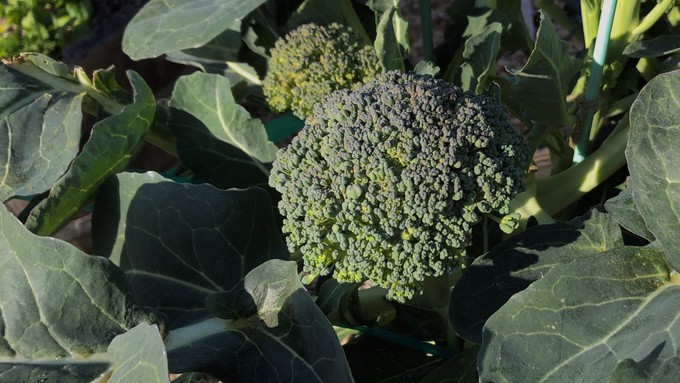
Broccoli is top pick, according to internet searches

In the past five years, California gardeners searched “how to grow broccoli" more than any other cool-season crop. This broccoli grew at the Fair Oaks Horticulture Center, which will be open Saturday so gardeners can ask "how to grow" questions in person. Kathy Morrison
What’s the most popular winter vegetable to grow in California? If you judge by internet searches, it’s broccoli in a green wave.
That’s the conclusion of researchers at AllAboutGardening.com, who scoured five years of Google Trends data to come up with a list of state-by-state winter favorites. (Their key phrase: “How to grow.”)
California gardeners searched “how to grow” broccoli more than any other cool-season crop. That was also the top search for seven other states including Michigan, Georgia and West Virginia.
No. 1 overall was garlic, say the researchers. That crop was the top search in 12 states from Hawaii to New York. (Considering garlic needs some chill to set solid heads, Hawaiian gardeners may have searched, “Can I grow garlic?” not just “how.”)
In third place were onions, the favorite search of seven states led by Texas and Oklahoma. With six states ranging from Florida to Colorado, lettuce edged out carrots, which was the top search in five states (including Nevada).
Four vegetables – radishes, cauliflower, Brussels sprouts and collard greens – were picked by two states apiece. Interestingly, the states doing the searching may be because those winter crops were more challenging for those gardeners. Radishes, for example, were the top search in Idaho and Kansas, two states that tend to get too cold for frost-tender radishes to thrive. Collard greens were tops in Minnesota and Massachusetts, two states not necessarily linked to this staple of Southern cooking.
Four vegetables were tops in just one state: Spinach (Wisconsin), beets (Utah), peas (Arkansas) and cabbage (South Carolina).
As for would-be broccoli growers in California, AllAboutGardening.com had this advice: Start indoors and transplant as summer’s heat starts to fade (we hope soon). From seed, broccoli needs 85 to 100 days to mature to a full-size head. Prolong broccoli season by cutting off the main head when ready, then harvest side shoots as they mature.
According to UC master gardeners, the best broccoli varieties to grow depends on what you want.
“Opt for varieties such as 'Calabrese', 'Green Comet' and 'De Cicco' for up to three months of extended harvest of side shoots; or choose 'Green Comet' and 'Green Magic' for large heads,” say the master gardeners. “Plant 'Cruiser' and 'Packman' for fast growth to maturity.”
California farmers produce a lot of broccoli each winter with about 40% of the crop grown in Monterey County, where they enjoy the most days of perfect broccoli weather – 60 to 65 degrees.
Central Valley farmers grow varieties that are more heat and cold hardy. In the San Joaquin Valley (another major broccoli-growing area), top cultivars include Avenger, Expo, Green Magic, Legacy, Marathon, Monte Carlo and Tradition.
For more tips on growing broccoli: http://ipm.ucanr.edu/PMG/GARDEN/VEGES/CULTURAL/broccoliplant.html
Comments
0 comments have been posted.Sacramento Digs Gardening to your inbox.
Sites We Like
Garden Checklist for week of July 21
Your garden needs you!
* Keep your vegetable garden watered, mulched and weeded. Water before 8 a.m. to reduce the chance of fungal infection and to conserve moisture.
* Feed vegetable plants bone meal, rock phosphate or other fertilizers high in phosphate to stimulate more blooms and fruiting. (But wait until daily high temperatures drop out of the 100s.)
* Don’t let tomatoes wilt or dry out completely. Give tomatoes a deep watering two to three times a week.
* Harvest vegetables promptly to encourage plants to produce more. Squash especially tends to grow rapidly in hot weather. Keep an eye on zucchini.
* Pinch back chrysanthemums for bushy plants and more flowers in September.
* Remove spent flowers from roses, daylilies and other bloomers as they finish flowering.
* Pinch off blooms from basil so the plant will grow more leaves.
* Cut back lavender after flowering to promote a second bloom.
* It's not too late to add a splash of color. Plant petunias, snapdragons, zinnias and marigolds.
* From seed, plant corn, pumpkins, radishes, winter squash and sunflowers.